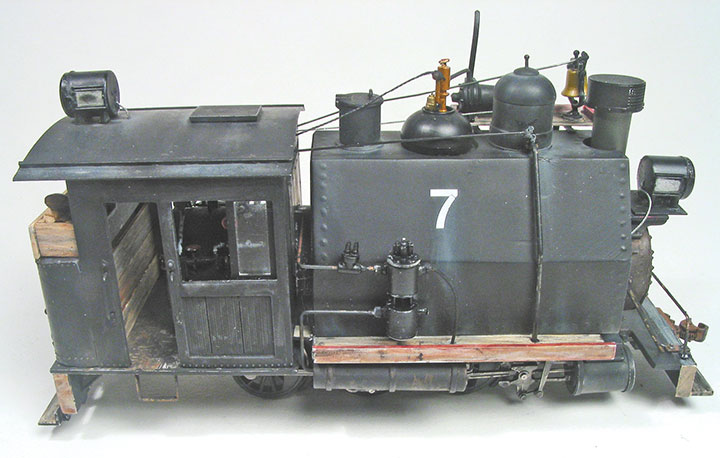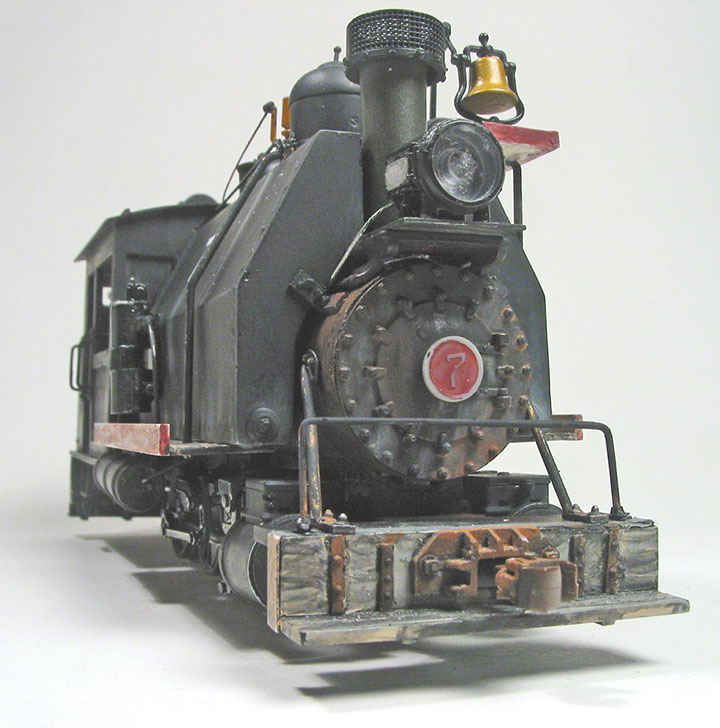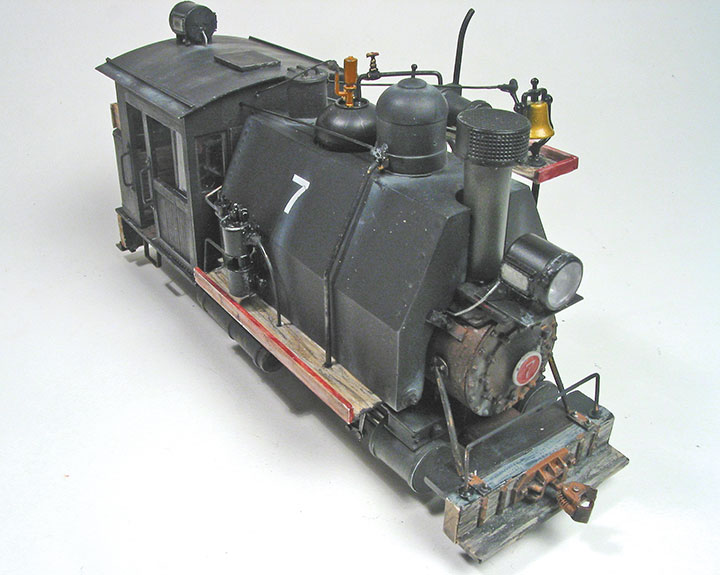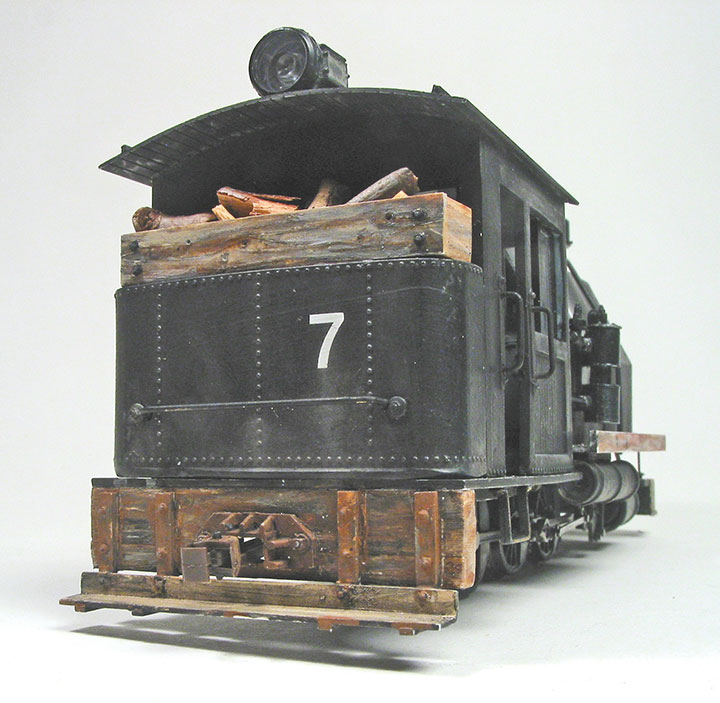I was impressed when I saw a model of the Mich-Cal 0-4-0T model that Les Davis built using his 3D resin printing skills. His model in On30 utilized the Bachmann Trains Forney model as the mechanism and running gear. Since I have worked closely with Les on some of my models by using his printed tanks and cabs, I thought I could do a nice freelance version of a similar, but not exact model, using the Bachmann Trains HO 4-6-0 locomotive. I previously used this mechanism and drivers for my “Scratch-Bash” article presented in the July/August 2019 GAZETTE, HO 4-6-0 to On30 0-6-0T. This is a nice running mechanism which allows slow movement, something desirable in a switching locomotive.
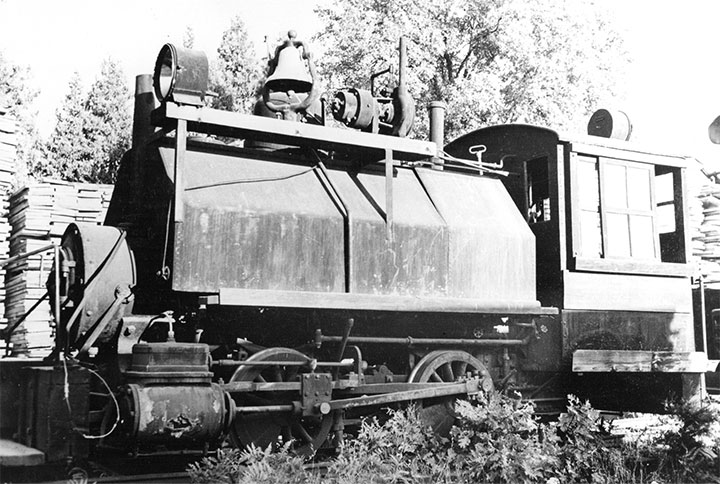
-Photo by Bob Brown.
The Michigan-California Lumber Company shops constructed the unusual “A” frame tank, as I refer to it, on two small switch engines. The second 0-4-0T, a Vulcan built around 1900, is the one I used as inspiration for both Les’ and my models. On the prototype there were two adjoining tanks, one smaller in the rear for fuel oil and a larger tank in the front for water. On Les’ printed tank there was a groove that represented this separation. I filled this groove with epoxy and then sanded it smooth to get the impression of one large water tank.
The cab is another Les Davis 3D print that I modified by adding a small wood fuel bunker. A new cab deck was fashioned from styrene and included the rear beam and coupler area. The boiler is a 3D print from Dylan Lambert at Lambert Locomotive Works out of Massachusetts. This boiler is made to fit the HO 4-6-0 motor and running gear and is the same diameter as the Forney which allows the Davis tank to fit as it was originally designed for the Forney boiler size. Once the cab and tank were joined on the HO mechanism, various details were then added including the unique platform or “table” that held both the bell and generator. The mechanism was altered only in having the cylinders “beefed” up by adding plastic tubing over the existing ones. I described how I did this in the July/August GAZETTE.
The locomotive kit-bashes I have done have been fun. Both Davis and Lambert work in 3D printing, along with others who are now offering kits using this new method, have made the task of producing new motive power, along with rolling stock much more accessible for today’s modeler. We are entering a new era of model railroad building.
